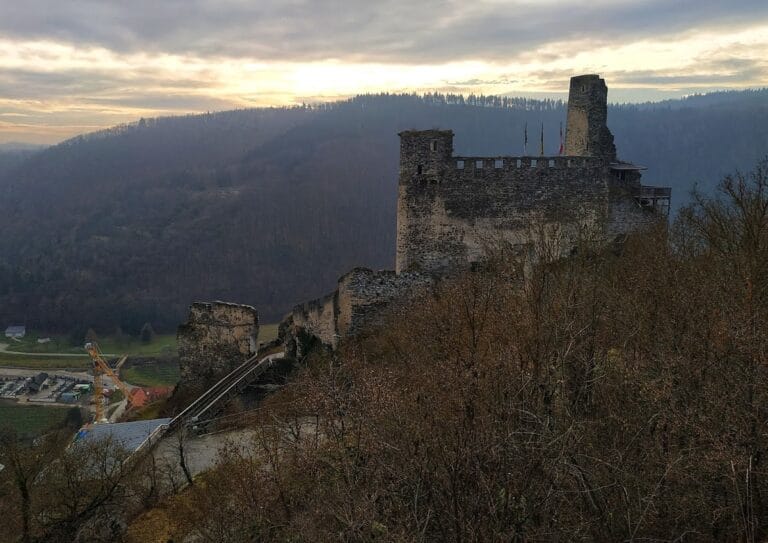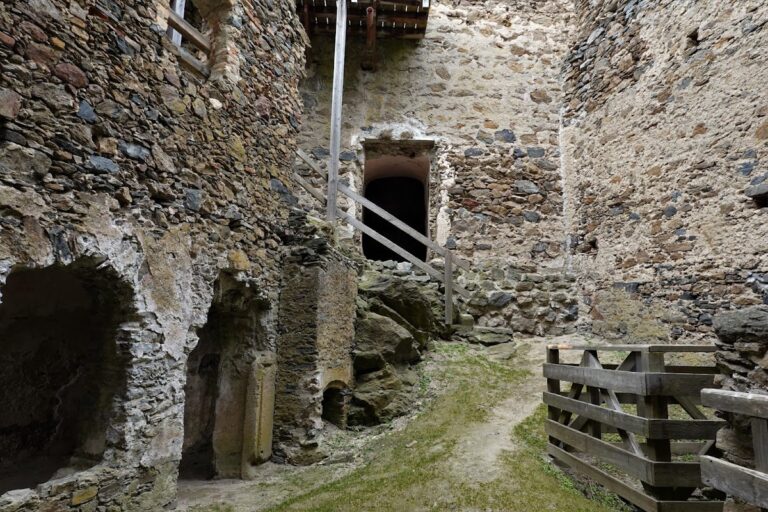Dürnstein Castle: A Medieval Fortress in Austria
Visitor Information
Google Rating: 4.7
Popularity: Medium
Google Maps: View on Google Maps
Official Website: www.duernstein.at
Country: Austria
Civilization: Medieval European
Remains: Military
History
Dürnstein castle ruins are located in the municipality of Dürnstein, Austria. The stone fortress was erected in the mid-12th century by the Kuenringer family, a noble dynasty who established their stronghold on land originally obtained from the Tegernsee monastery. The castle was purposefully constructed as a hilltop citadel overlooking the Danube River within the Wachau valley and formed part of a fortification system linked to the adjacent town by defensive walls.
During the late 12th century, the castle gained historical prominence when King Richard I of England, known as Richard the Lionheart, was held prisoner there between December 1192 and March 1193. Captured at the instigation of Duke Leopold V, who harbored resentment from earlier conflicts in the Third Crusade, Richard was eventually transferred to Emperor Henry VI. The emperor secured a considerable ransom, marking this episode as a significant medieval political event tied to Dürnstein.
In the early 14th century, documentary records mention a chapel within the castle dedicated to John the Evangelist, indicating the site’s religious aspects alongside its military purpose. Later, in the year 1588, Prince Reichard Streun von Schwarzenau undertook reconstruction efforts to adapt the castle into a fortress, enhancing its defensive capabilities within a period marked by regional conflicts.
The castle’s military importance continued into the mid-17th century. In 1645, Swedish troops under the command of Lennart Torstensson captured the fortress during the closing stages of the Thirty Years’ War. Upon retreating after peace negotiations, the Swedes deliberately dismantled its fortifications. By 1662, the site ceased to be continuously garrisoned and was last utilized as a defensive structure during a Turkish invasion. Following these events, the castle gradually fell into ruin, with destruction becoming permanent by 1679.
Over two centuries later, in 1882, Prince Camillo Starhemberg revitalized the location by constructing the Starhemberg Tower atop the ruins. He also established a mountain path to the site, contributing to its recognition as a cultural landmark within the Wachau region.
Remains
The remaining structures of Dürnstein castle present the layout of a medieval hilltop fortress, composed primarily of stone and occupying a strategic position above the town of Dürnstein. The castle and its neighboring settlement were interconnected by an extended defensive wall, creating a contiguous fortified zone that combined military protection for both.
Within the castle grounds stood a chapel dedicated to John the Evangelist, first recorded in 1306. Above this chapel lay the inner courtyard, where a prominent geological feature was incorporated: a sizable natural rock with a chamber carved into it, functioning as a rock cellar. This unique element illustrates how the natural landscape was adapted to meet practical needs within the fortress.
The ruins include fragments of the main tower, gate structures, and sections of the enclosing defensive walls. These components remain in a condition reflecting several centuries of decay since their partial demolition in the mid-1600s. Their fragmented state conveys the extent of the destruction inflicted during historical conflicts and the absence of subsequent restorations.
Adding a later architectural element to the site, the Starhemberg Tower was constructed in 1882 directly above the castle ruins. This tower was an initiative by Prince Camillo Starhemberg and is notable for contrasting with the medieval foundations on which it stands. Adjacent to the castle ruins lies the Dürnstein climbing garden, which holds the distinction of being the oldest climbing area in the Wachau, thus linking the site’s natural features with recreational use in more recent history.










